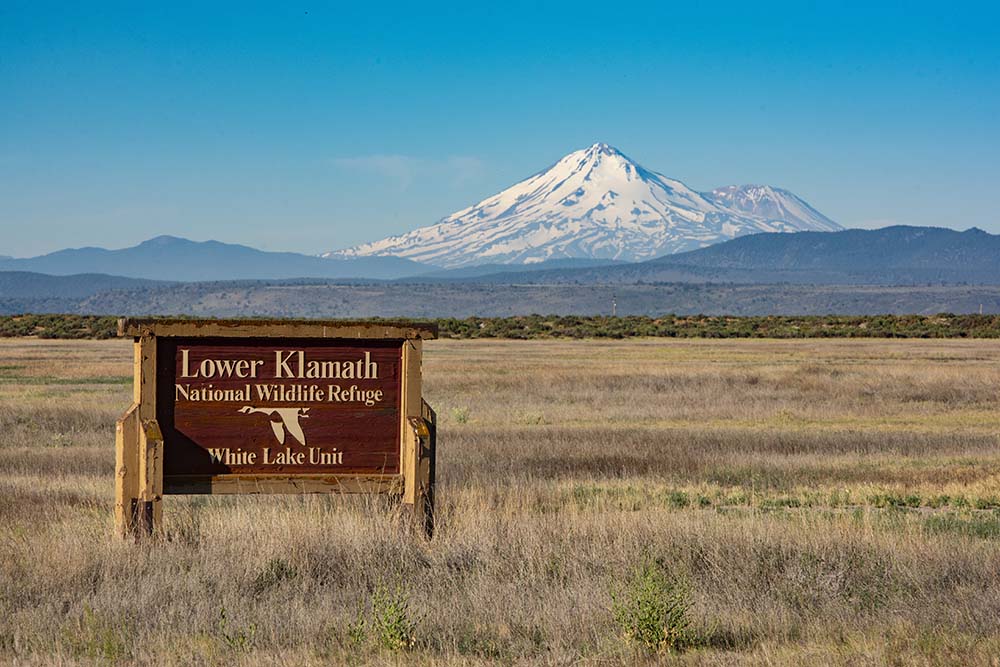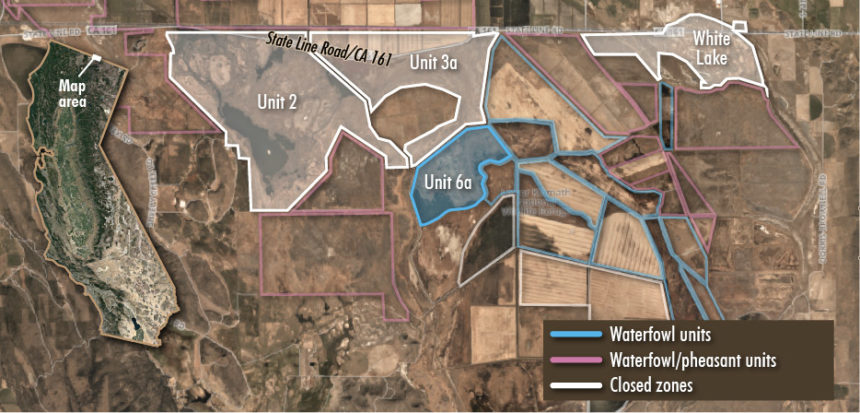
Sep 16, 2019
Lower Klamath: Farmers to the rescue!
The Lower Klamath National Wildlife Refuge, which has been critically deprived of essential water supplies for more than a decade, got a piece of good news: Farmers in the Klamath Basin have taken stock of their water needs and starting today they will be sending three times as much water to Lower Klamath as they'd planned two weeks ago, totaling about 25,000 acre feet.
What does that mean? In addition to Unit 2, which has had water through the summer, Unit 6A – a hunt unit – is halfway flooded, pumps are running to flood White Lake and Unit 3 is up next. While Unit 3 is a sanctuary, it supports dry field goose hunting in the Straits.

The shaded units of Lower Klamath NWR are flooded or flooding now. The background satellite imagery shows a very dry refuge in October 2018.
While this is nowhere near what should be flooded by now, this improves the situation for migrating ducks and geese, and provides some huntable water. Sept. 21-22 is Youth Hunt Weekend and the regular season starts Oct. 5. (See complete season dates here, or check out this poster with all waterfowl and upland dates, limits and shoot times.)
This generous gift from farmers in the area is a product of collaborative efforts among stakeholders in the region, in which California Waterfowl has been a vocal and steadfast advocate for the refuge.
"We’re so very thankful for the water provided by farmers in the Klamath Basin, and we value their partnership and generosity," said California Waterfowl Chief Operating Officer Jake Messerli. "That said, we won’t be satisfied until the refuge has a dedicated water source.
"It’s irresponsible to flood the refuge only when 'excess' water is made available; ecosystems don’t work when managed this way," he said. "We’ll continue working with the farmers, tribes and federal government to re-balance the region’s water allocations to meet the needs of the refuge and the millions of waterfowl and other wildlife that depend on it."
The Lower Klamath National Wildlife Refuge is the nation's first national wildlife refuge for waterfowl, founded in 1908, and when supplied with water, it serves as a key staging, breeding and molting area for migratory birds in the Pacific Flyway. For more information about California's fight against the desertification of this refuge, click here.


